Nationality United States Known for Public art | Name Tomie Arai | |
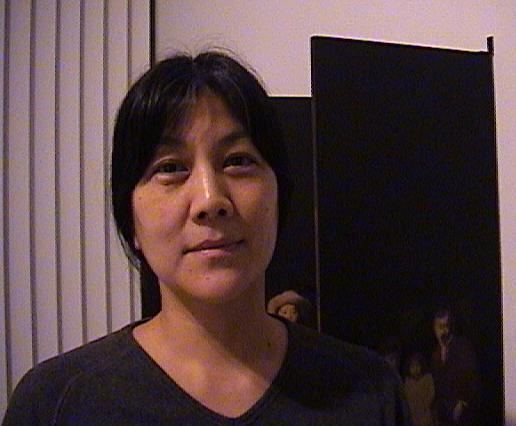 | ||
Born 1949 New York | ||
A Conversation on Asian American Art with Tomie Arai
Tomie Arai (born 1949) is an Asian American artist and community activist who was born, raised, and is still active in New York City.
Contents
- A Conversation on Asian American Art with Tomie Arai
- AAWWTV Writing Against Displacement with Tony Robles Jessica Hagedorn Tomie Arai
- Biography
- Art
- Permanent collections
- Awards
- Literature
- References
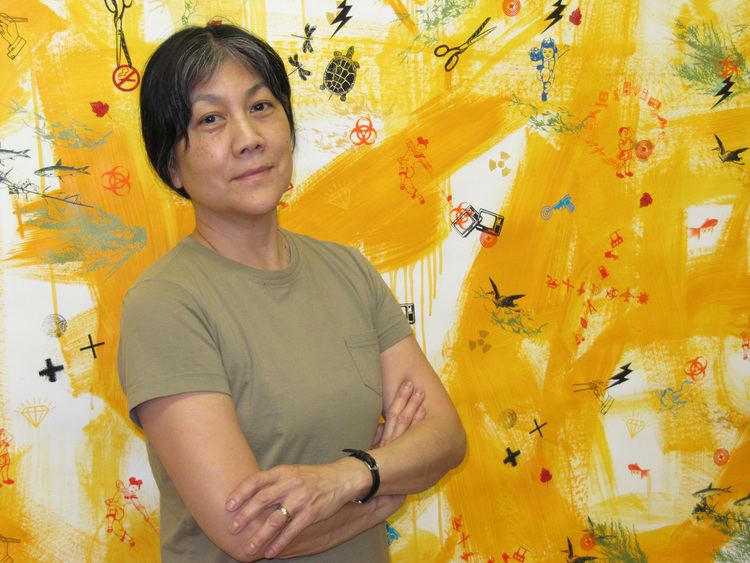
AAWWTV: Writing Against Displacement with Tony Robles, Jessica Hagedorn & Tomie Arai
Biography

Artist and community activist Tomie Arai was born in New York City in 1949. A third generation Japanese American, her parents are from Hawaii and California and her grandparents were farmers who settled in the country in the early 1900s. Her experiences growing up Asian American in New York City deeply color her work as an artist, as many of her works deal with the urban experience and attempt to make connections to her family and community through art.
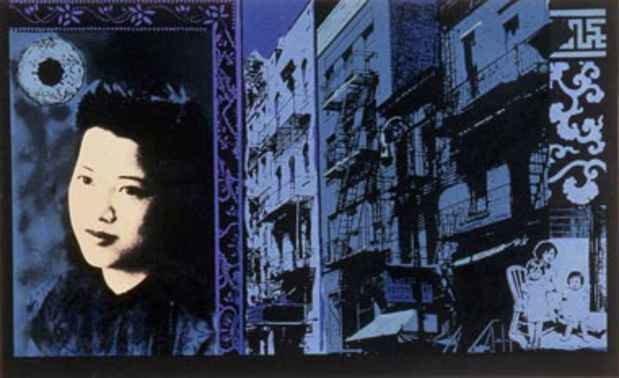
At the time she began to pursue a career in art in the late 1960s and early 1970s, her feeling that the New York art world failed to address her experiences as an Asian American and woman of color propelled her to become involved in community art. She joined the Basement Workshop in 1972 and there, learned about Asian American activism and making art along with other Asian American artists, including Arlan Huang. Between 1972 and 1979, Arai worked at Cityarts Workshop as a resource center coordinator and mural director, painting a series of community murals in New York City’s Lower East Side. Cityarts’ first project in Chinatown, A History of Chinese Immigration to the U.S., involved many Basement Workshop members. After Cityarts, Arai worked as a freelance graphic artist for Alan Okada of Citibank. At the time, Arai created posters, brochures and promotional materials for community groups as part of Citibank’s Graphic Support program. In the 1980s, Arai began to focus on printmaking. As a Board Member of the Lower East Side Printshop and a keyholder for over 15 years, Arai also participated in print residencies at the Women’s Studio Workshop, the Printmaking Workshop, Self Help Graphics and the Brandywine Workshop in Philadelphia. These non-profit workspaces encouraged artists to collaborate and experiment with the printed image.
Art

As an artist, Arai has been an avid proponent of making art in spaces outside of the hierarchical gallery system and the need to redefine art and its relation to community. Instead of the historical paradigm of public art as a monumental sculpture placed in a site with no connection to the community, she advocates community-based art created through a process of dialog between artist and community members whose end goal is creating art with which the community feels ownership. She stresses that artists need to build relationships with organizations and communities. She has created community-based works such as “Swirl” a public sculpture in Philadelphia that helps bring to the fore the less visible history of Chinese Americans in the nation’s founders’ city, and a variety of other works commissioned by the Arizona Humanities Council, the Cambridge Arts Council, the Bronx Museum of the Arts, the National Endowment for the Arts and the Museum of Chinese in America.
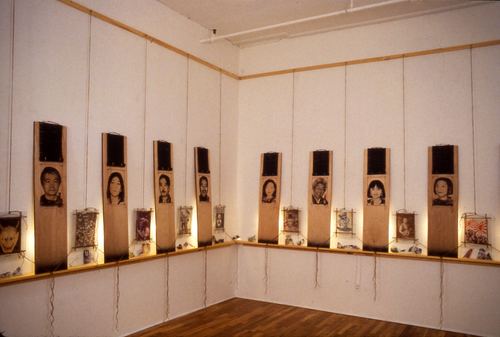
In addition, Arai has created site specific public works of art commissioned by the New York City Department of Cultural Affairs' Percent for Art Program, the General Services Administration of the Federal Government, the NYC MTA Arts for Transit Program and the San Francisco Arts Commission that deal with community themes.
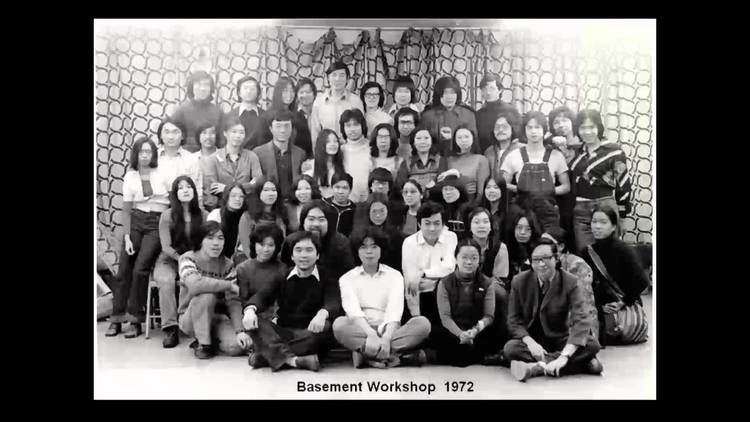
An Asian American activist who participated in the political movements of the 1960s, Arai is still engaged in community work. She sat on the Boards of the Museum of Chinese in the Americas, where she served as its first artist-in-residence, the Lower East Side Printshop, Printed Matter, the Women’s Studio Workshop and the Bread and Roses Cultural Project of the 1199 Health and Hospitals Workers Union. She is currently serving on the Board of Directors of the Joan Mitchell Foundation.
She was NYU Asian/Pacific/American Institute’s first Artist-in-Residence in 1997-1998 and has also served as an Artist-in-Residence at the PS 1 Museum, (1991), the Dieu Donne Paper Mill (1991-2), the Bronx Museum of the Arts (2003), the Lower East Side Tenement Museum (2005); the Center for Exploratory Photography and Art in Buffalo, New York (2005); the Asian Arts Initiative (2006) and the Center for Book Arts (2009).
Through her body of work utilizing silk-screening, site-specific installations, collections of oral histories and community memories and images, Arai explores the relationship of art to history and the role that memory plays in retelling a collective past or the mythology of the past. Her work demonstrates her persistent commitment to documenting and reclaiming a variety of peoples’ untold histories while it simultaneously also engages viewers in dialogue with contemporary social struggles.
Permanent collections
Tomie's work is in the permanent collections in museums including the Museum of Modern Art, Library of Congress, and the Museum of Chinese in the Americas.
Awards
Literature
In 1998 the Bronx Museum of the Arts published Tomie's book: "Tomie Arai: Double happiness". Arai also illustrated children's book, Sachiko Means Happiness (1990).
